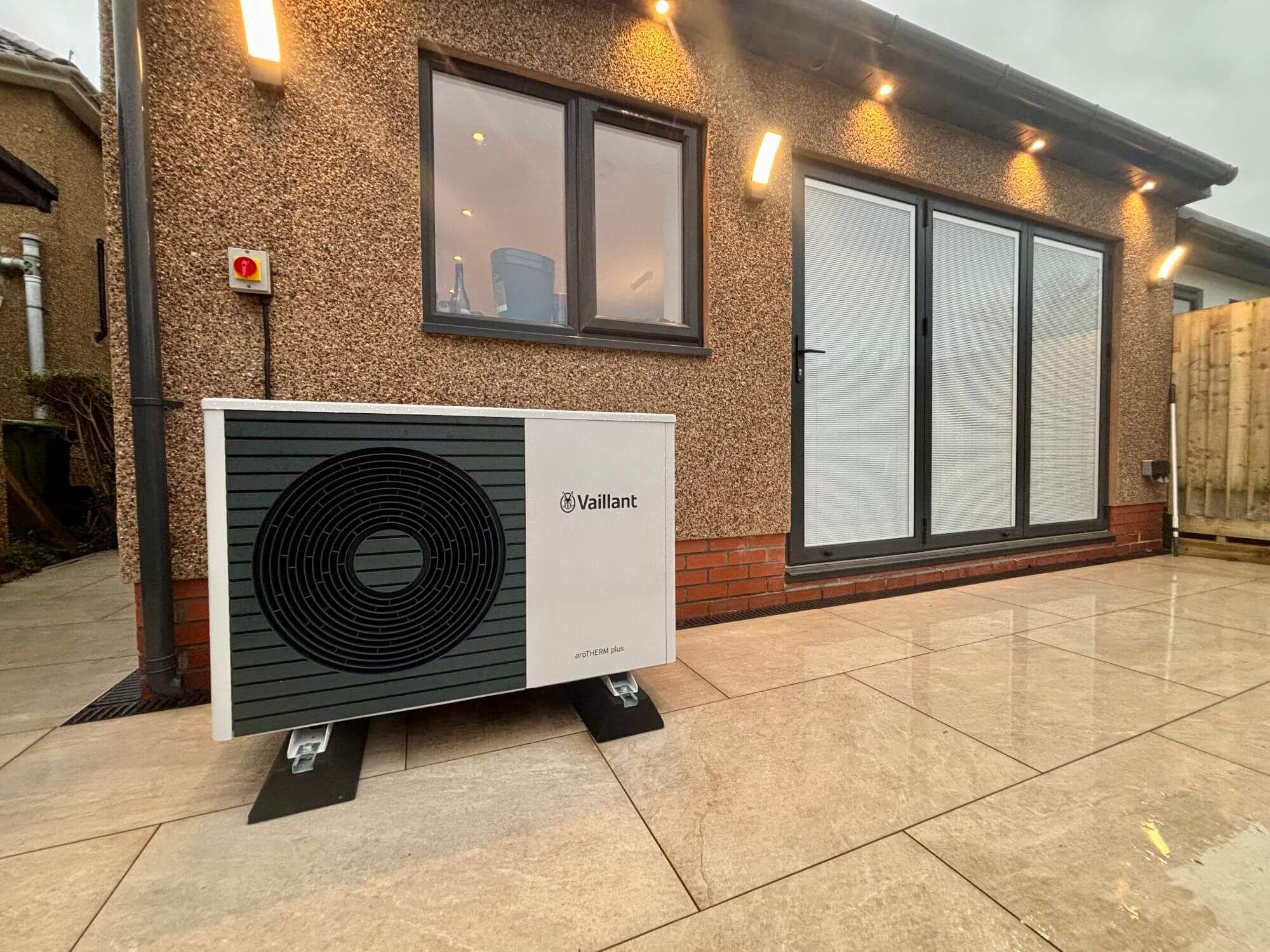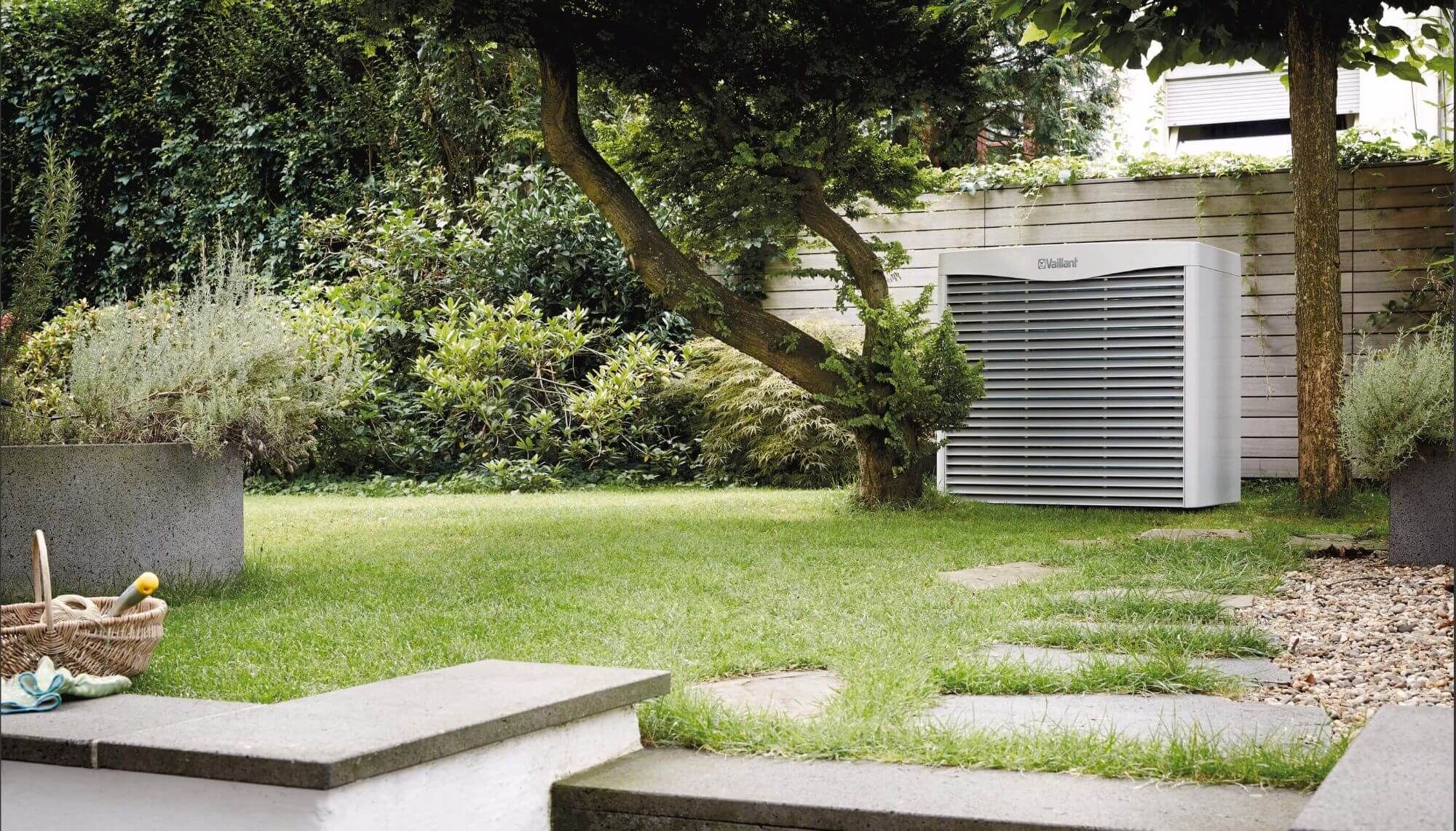An air source heat pump works by extracting readily available heat in the air and local environment through temperatures between -20°C and +35°C, which helps to reduce the dependency on fossil fuels as well as significantly cutting carbon emissions. Air source heat pumps use electricity to operate and run the heat pump. For every 1kW of electricity used, between 3kW and 5kW of thermal energy is available for heating and hot water is available.

Why change to a heat pump?
Reduce your carbon footprint – an air source heat pump will significantly reduce the amount of energy used to heat your property.
Increased comfort – air source heat pumps provide increased comfort levels with a steady temperature all year round, rather than on and off for short periods as with a gas or oil boiler, which can be particularly favourable for those working from home. This can also help reduce damp in older buildings due to the constant low level heat maintaining an even, comfortable temperature throughout the property.
There is an upfront government grant of £7,500 towards the cost of replacing your gas, oil or direct electric heating system with a heat pump. Read more about the Boiler Upgrade Scheme.
Reduce running costs, especially with air source heat pump specific energy tariffs, such as the OVO Heat Pump Plus add-on tariff, or the Octopus Cosy tariff.
Convenience – in off-grid properties, you will no longer need fuel deliveries, no unsightly oil or LPG tanks on your property, and no more boiler fume smells
Is my home heat pump ready?
A heat pump will heat any home efficiently so long as it is designed and installed correctly. We have countless examples of century’s old properties with limited to no insulation that have been successfully transferred from fossil fuels to heat pumps. The key to installing heat pumps of any kind is that the heating emitter circuit is optimised to work with heat pumps and run at lower flow temperatures (around 40°C-50°C) than used with a conventional fossil fuel boiler.
Heat pumps run at lower temperatures – radiators and occasionally radiator pipework might need to be changed to be suitable, we can advise on any changes that need to be made.
Internal space requirements - you will need to allocate some space within your house for the hot water cylinder, buffer tank/volumiser, pipework and controls. We can advise on the space required.
Any heating system will use less energy the better insulated the home is and we would always encourage improvements in insulation levels to reduce running costs.
Will a heat pump lower my bills?
A well designed & installed system should always lower your energy bills. As a heat pump runs on electric, you will be able disconnect your gas supply which means you can remove your standing charge. There are now heat pump tariffs available (such as the OVO heat pump tariff) which mean you can pay a lower rate than your standard tariff for any electricity used by your heat pump, further reducing running costs.
| Illustrative Home Energy Use | Gas Boiler | Heat Pump | |
|---|---|---|---|
| Generic Tariff | OVO Heat Pump Plus | ||
| Home Energy Demand (kWh) | 17,000 | 17,000 | |
| Efficiency (%) | 85% | 380% | |
| Energy Required (kWh) | 20,000 | 4,474 | |
| Price per unit (£/kWh) | 0.05 | 0.22 | 0.15 |
| Annual Running Cost | £1,084 | £984 | £671 |
| CO2 Factor (kg/kWh) | 0.203 | 0.198 | 0.205 |
| Total Emissions (kg) | 4,060 | 886 | 917 |
Installation information
An air source heat pump unit looks much like an air conditioning unit and is sited somewhere outside the property. A small concrete base with a drain or soak away will typically need to be constructed outside in an area where the unit will not cause too much disruption. The noise output of the unit up close is relatively quiet (similar to that of a dishwasher in the next room) however it should still be located in a sensible location, for example on an unbroken wall near a utility room where it will not disturb the occupants of the property.
Inside the property a small “plant” area is required to house the hot water cylinder and other mechanical and electrical equipment, typically around 1m2
